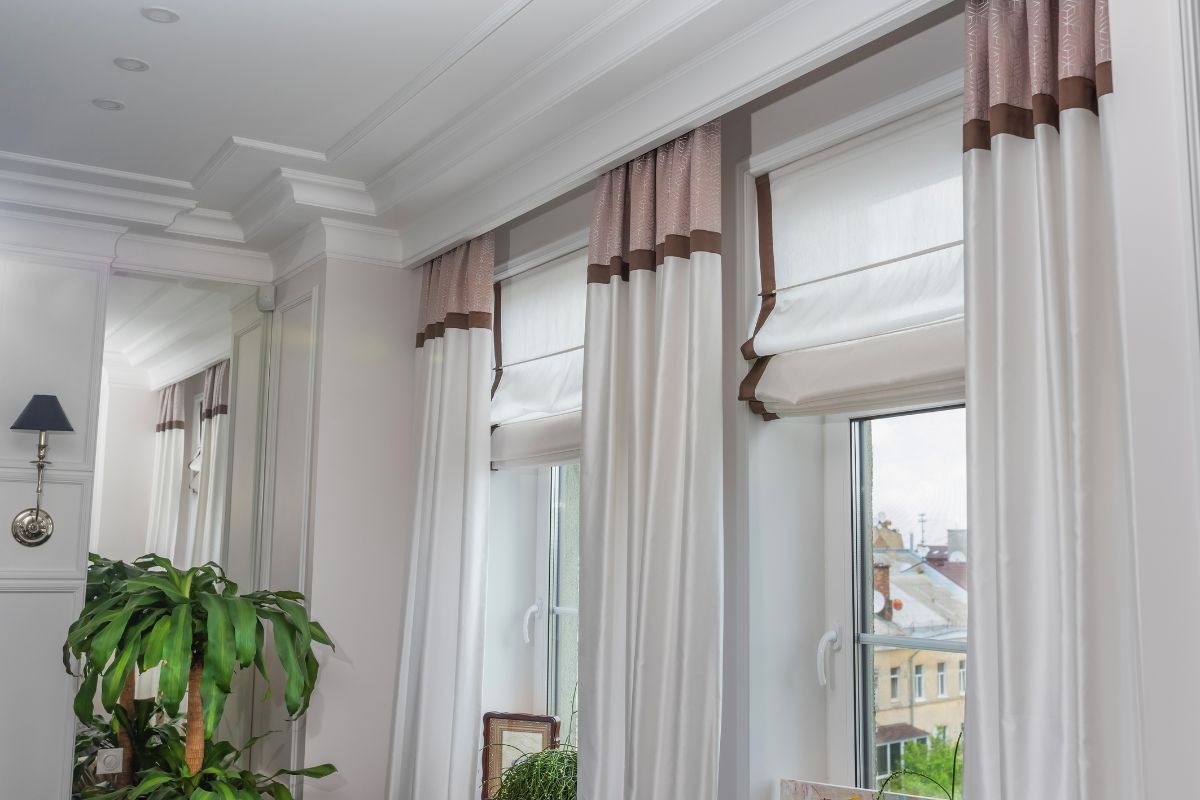Curtain Up Without Drilling: Embracing Damage-Free Window Treatments
Gone are the days when beautiful curtains meant sacrificing your walls to drill holes. Whether you’re a renter, a commitment-phobe when it comes to home decor, or simply looking for a hassle-free solution, there are fantastic ways to achieve a stylish window treatment without reaching for the power drill. This guide explores various methods for hanging curtains without drilling, allowing you to add elegance and functionality to your space without leaving a trace.
Understanding Your Curtain Needs
Before diving into installation methods, consider the weight and style of your desired curtains. Lightweight options like sheers or cafe curtains offer more flexibility in terms of hanging methods. Heavyweight drapes or blackout curtains, however, might require more robust solutions.
Curtain Weight Matters:
- Lightweight Curtains (under 5 lbs): Perfect for kitchens, bathrooms, or living room accents, these curtains can be hung using tension rods, adhesive hooks, or even curtain clips attached to a wire.
- Medium-Weight Curtains (5-10 lbs): These curtains offer more light control and privacy. They can be supported by adhesive hooks with higher weight capacities or heavy-duty tension rods.
- Heavyweight Curtains (over 10 lbs): Blackout curtains, thick thermal drapes, or luxurious velvet panels fall under this category. While tension rod solutions might exist for some heavier options, these curtains are generally best suited for curtain rods mounted securely with screws or anchors.
Curtain Style Considerations:
- Curtain Rod Pockets: If your curtains have a built-in pocket at the top, it slides directly onto the curtain rod, offering a classic and polished look.
- Curtain Rings or Hooks: These separate attachments allow you to hang various curtain styles, including those with panels or tabs.
- Grommet Curtains: These curtains have reinforced holes at the top that slip directly onto the curtain rod, creating a modern and streamlined appearance.
Unveiling Damage-Free Curtain Solutions
Now that you’ve assessed your curtain needs, let’s explore the exciting world of drilling-free installation methods:
1. Tension Rods: A Versatile Champion
Tension rods are champions of damage-free curtain hanging. These expandable rods utilize internal tension to create pressure against opposing walls, holding the rod securely in place. Perfect for lightweight to medium-weight curtains, tension rods come in various sizes, materials (including decorative finishes), and extendable lengths to fit your window.
- Selecting the Right Tension Rod: Measure the width of your window frame to ensure the rod can be extended to create a snug fit. Choose a diameter that complements your curtain style and weight. Remember, thicker rods provide better support for heavier curtains.
- Installation: Simply extend the tension rod until it creates pressure against the opposing walls of your window frame. Ensure the rod is level for a polished look.
2. Adhesive Hooks: A Convenient Choice for Lighter Curtains
Adhesive hooks are lifesavers for renters and those seeking a fuss-free solution. They come in various sizes and weight capacities, making them suitable for lightweight curtains, sheers, or cafe curtains.
- Choosing the Right Hooks: Select hooks with a weight capacity exceeding your curtain weight for added security. Opt for adhesive hooks designed for smooth surfaces like painted walls or tiles. Rough surfaces might require stronger adhesive options or alternative methods.
- Installation: Clean and dry the wall surface where you intend to place the hooks. Follow the manufacturer’s instructions for applying the adhesive strips and attaching the hooks. Allow the recommended curing time before hanging your curtains.
3. Magnetic Curtain Rods: A Solution for Metal Surfaces
Magnetic curtain rods are a unique option for hanging curtains on metal window or door frames. The magnets embedded within the rod securely grip the metal surface, eliminating the need for drilling or adhesives.
- Suitability: Magnetic curtain rods are ideal for lightweight curtains hung on metal surfaces with ferrous metals (those containing iron). They might not be suitable for non-metallic surfaces or heavy curtains.
- Installation: Simply place the magnetic curtain rod onto the clean, dry metal surface. Ensure the rod is level and secure.
4. Curtain Clips and Wire: A Creative Option
For a rustic or industrial aesthetic, consider using curtain clips and a thin wire or cable. This method works well for lightweight curtains or cafe curtains.
- Materials: You’ll need a thin wire or cable cut to the desired length (slightly wider than your window), curtain clips, and optional hardware for attaching the wire to your wall (depending on your wall surface).
- Installation: Secure the wire or cable to your wall using appropriate hardware like cup hooks or eye screws (for drywall, ensure you use appropriate anchors). Attach the curtain clips to your curtains and clip them onto the wire for a unique and functional display.
Beyond the Basics: Tips and Considerations
Choosing the Right Curtain Rod:
- Material: Curtain rods come in various materials like metal, wood, or plastic. Metal rods offer a sleek and modern look, while wooden rods provide a more classic or rustic aesthetic. Plastic rods are a budget-friendly option but might not be as durable for heavier curtains.
- Diameter: The diameter of the rod should complement the weight and style of your curtains. Thicker rods offer better support for heavier fabrics, while thinner rods work well for sheers or lightweight curtains.
- Finials: Finials are the decorative ends of the curtain rod and can add a touch of personality to your window treatment. They come in various shapes, sizes, and finishes to match your decor style.
Additional Tips for a Flawless Finish:
- Measure Twice, Hang Once: Measure your window frame carefully to ensure your chosen hanging method and curtain rod will fit properly.
- Level is Key: Use a level to ensure your curtain rod is perfectly horizontal for a polished look.
- Consider Curtain Clearance: Leave enough space between the top of your window and the curtain rod for proper hanging and functionality.
- Embrace Double Rods: For a layered look or blackout functionality, consider using two curtain rods. One rod can hold sheer curtains for light diffusion, while the other can hold heavier drapes for privacy and light control.
- Dress it Up!: Don’t forget the finishing touches! Curtain tiebacks can add a decorative element and help manage your curtains when open.
Maintaining Your Damage-Free Magic
While these methods offer a convenient and damage-free solution, remember that they have weight limitations. Avoid overloading tension rods or adhesive hooks to prevent them from sagging or detaching from the wall.
Here are some additional tips for maintaining your damage-free curtain solution:
- Avoid Harsh Conditions: For adhesive hooks, be mindful of extreme temperatures or high humidity, which can weaken the adhesive bond.
- Reassess Over Time: Over time, adhesive strength might diminish. If you notice any sagging or movement, consider replacing the adhesive strips or opting for a more permanent solution.
- Clean Up Carefully: When removing adhesive hooks or curtain clips from the wall, follow the manufacturer’s instructions to minimize damage to the surface.
By following these tips and choosing the appropriate method for your curtain weight and style, you can achieve a beautiful and functional window treatment without sacrificing the integrity of your walls. So unleash your creativity, embrace these damage-free solutions, and let your curtains become the crowning glory of your space!




